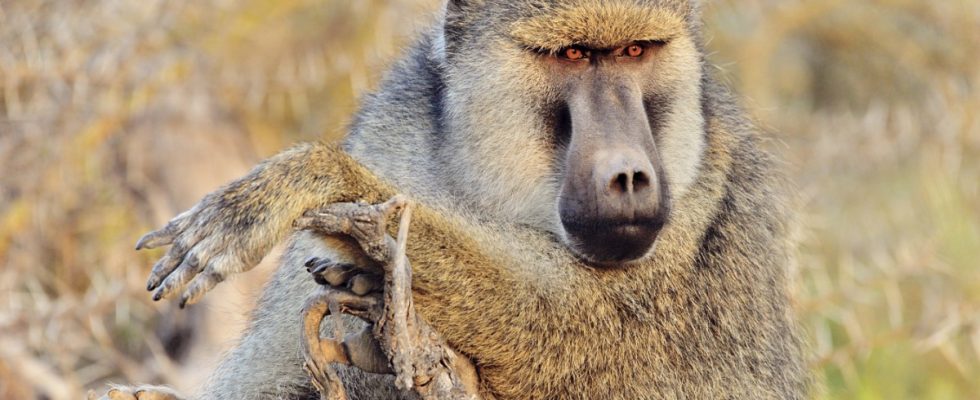Of the many animals idolized in ancient Egypt, baboons are perhaps the most enigmatic. The primates were not native to Egypt at all, but they were, like ibises, considered manifestations of the wisdom god Thoth. In order to keep them at their temples, the Egyptians had to import the animals from far away; In addition, they tried to breed the monkeys on site. According to tradition, there were at least a dozen places in Egypt where baboons were kept and worshiped. But even though the monkeys were sacred animals, researchers now show that they did not have an easy life. On the contrary: the baboons were treated badly.
Scientists led by Wim van Neer from the Royal Belgian Institute of Natural Sciences have re-examined baboon mummies that were found a little more than a century ago in Gabbanat el-Qurud, in the so-called Valley of the Apes near Luxor. Today the remains of the animals are kept in the Musée des Confluences in Lyon. Like the researchers in the magazine Plos One to report, these primates in Egyptian captivity apparently suffered from chronic malnutrition and hardly saw the sun throughout their lives. Baboons actually love sunbathing. The Egyptians even interpreted the cries of the animals in the morning and evening as an invocation to the sun. This behavior could have been a decisive factor in why the animals were assigned religious significance.
In order to examine the mummified baboons, the researchers first had to sort the individual parts. At the beginning of the 20th century, scientists had already put together eight baboon skeletons, sometimes combining bones from several animals. In addition to these skeletons, there were 23 skulls, 24 mandibles and more than 200 vertebrae and bones from baboons from Gabbanat el-Qurud. According to van Neer’s researchers, the bones came from at least 36 different Anubis and mantled baboons that died between 794 and 520 BC. They therefore lived at the beginning of the so-called Late Period in Egypt, in which animal cults became a mass phenomenon.
There is evidence of rickets, bone softening, osteoporosis and fibrous osteodystrophy
However, of these 36 baboons, there were only four whose bones showed no signs of disease. The remains of the remaining animals were deformed or otherwise damaged; Researchers identified evidence of rickets, bone softening, osteoporosis and fibrous osteodystrophy, in which the body breaks down bone tissue to produce calcium. The scientists write that the reasons for this could be varied. However, it is obvious that there is a lack of vitamin D and calcium. Because the skin can produce vitamin D itself using the sun’s UV light, the reason is probably that the animals didn’t get enough sunlight.
How the animals were captured, kept and fed in detail is unclear. It was only in September that researchers led by Konstanz biologist Gisela Kopp found out based on genetic analysis, that the Egyptians probably introduced cloaked baboons from the Horn of Africa. The mummified Anubis baboons, in turn, probably came from the south, the Nile Valley in what is now Sudan. The animals in Egypt were probably given kitchen scraps to eat. And because baboons are good climbers and can be aggressive in captivity – the Egyptians therefore removed the canines of individual animals – they were apparently locked in covered rooms. So the keepers kept the animals away.
Such a room could be seen in Tuna el-Gebel, around 300 kilometers downstream from Luxor. Van Neer’s team writes that a building there was identified as an animal cage: a two by three meter room, roughly dated to the first centuries after the birth of Christ, with walls made of limestone and a small lockable window for feeding the animals.
In Tuna el-Gebel, famous for its animal cemetery, researchers have also found mummified baboons – more than 240, much more than in Gabbanat el-Qurud. These skeletons show similar clinical pictures. And they also show that the health of the baboons became increasingly worse over time. Based on the surviving mummies, at the beginning of the Egyptian Late Period, i.e. in the seventh century BC, only 15 percent of the monkeys in Tuna el-Gebel had deformed skeletons. By the second century BC, almost every second baboon was affected.
This could indicate that the primates’ housing conditions became increasingly precarious over time. But this may also show that the Egyptians tried to breed baboons themselves: the deformities would then be the result of inbreeding.

